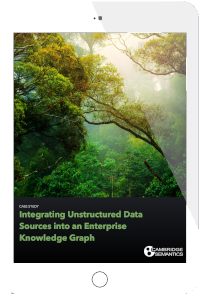Integrating Unstructured Data Sources into a Knowledge Graph
Several of our customers are leveraging Anzo to build scalable, complex knowledge graphs that stretch across diverse sets of structured and unstructured data. Let's take a look at a mission-critical search application backed by a knowledge graph to better understand Anzo's support of unstructured data.
The Production Use Case
A large US company needs to build an integrated, large-scale search application that leverages data from multiple applications across the enterprise.
Unstructured and structured data from these previously siloed applications must be harmonized into a single, flexible model on which the search application is built.
Anzo delivers the scalable, comprehensive knowledge graph that brings these numerous structured and unstructured data sources together.
There are a number of complex technical requirements:
| Allow analysts to execute text-based searches across millions of documents in real-time. | |
| Accommodate hundreds of thousands of new documents added to the knowledge base daily. | |
| Enable complex filtering and sorting of text-based searches with additional criteria of related but distinct metadata attributes. | |
| Support the development and use of a flexible data model (Ontology) that harmonizes structured and unstructured data. | |
| Incorporate and surface results from a cloud-based, ML-driven text analytics engine used for document classification; facilitate development, testing and validation of this analytics engine to further improve its efficacy over time. |
This case study showcases one example of a production customer using Cambridge Semantics’ knowledge graph platform, Anzo, to fulfill all these requirements.
Fill out the form for the full case study PDF.

